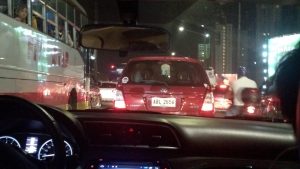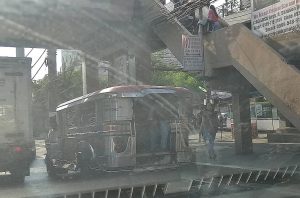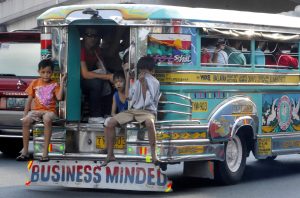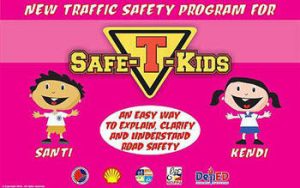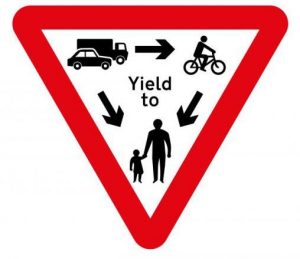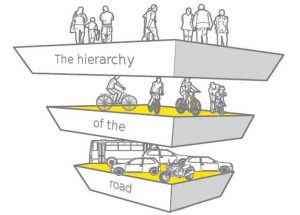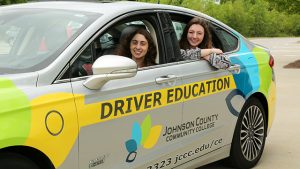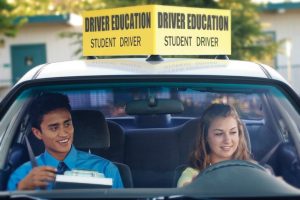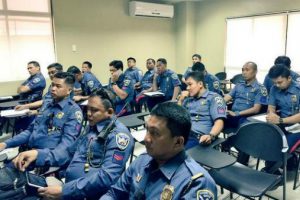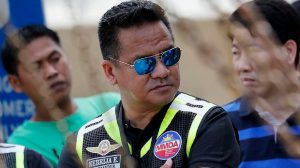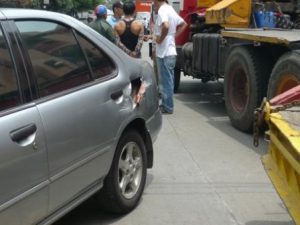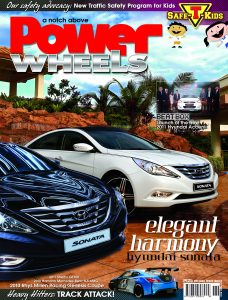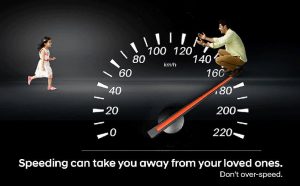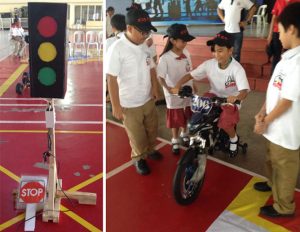In the second part of this online Opinion column, we summarized how the first E (Engineering) of the 3 E’s – Engineering, Education and Enforcement – can help manage and eventually solve the horrendous Metro Manila traffic. For the third installment, we take a look at the second E (Education) aspect of traffic management.
A lady columnist of one the leading local newspapers wrote in her August 4, 2019 opinion column that Filipino drivers often break traffic laws because we lack discipline. She did not elaborate further why Filipino drivers lack discipline. We believe that we lack discipline because we lack the proper education about traffic laws and our responsibilities on the road. We tackled the negative influences of PUV drivers on our youth in an earlier Opinion column entitled “The Real Influencers”. (Please click the “Opinion” bar in this websites header and scroll down.) Just to sum it up: Impressionable young passengers see how the jeepney, bus, taxi, tricycle or school bus driver that they’re riding with drives through the roads everyday and grows up thinking that’s how driving should be. Thus, they grow up and turn into bad drivers themselves. Like Mr. Miyagi said in the movie Karate Kid; “There are no bad students. Only bad teachers.”
So, how do we avoid teaching the wrong stuff to our kids? First, we have to integrate Road Safety into the Elementary and High School Curriculum. In 2010, we were involved in the creation of “Safe-T-Kids”, a new traffic education program for elementary students that will teach road safety through the use of flash cards. The project was led by then-Assistant Secretary Dante Lantin of the then-Department of Transportation and Communication (DOTC) and the program was completed with volunteers from cause-oriented groups, road safety advocates, the academe, and the media. The initial idea was to integrate the flash cards into the elementary curriculum all over the country but the project came into a grinding halt when representatives from the Department of Education, Culture and Sports (DECS) laid down the costs to implement the program in the hundreds of millions of pesos. Let’s just say that their figure had too many zeros more than what Asec. Lantin had allocated to create the project in the first place.
Knowledge is Power
The late popular weather forecaster Ernie Baron became famous for his line “Knowledge is Power” and it is true when it comes to traffic management. If more road users knew the rules of the roads, then there will be less traffic congestion despite the traffic volume, and perhaps less accidents, and less need for traffic cops. For example, are you aware of the Hierarchy of Road Users? Do you know that pedestrians always have the first right-of-way on the road, followed by two-wheeled vehicles (bicycles and motorcycles), and then only by four- and multi-wheeled vehicles (cars and trucks)? Expounding further, do you know that light vehicles (cars) have priority on the road before medium vehicles (vans, SUVs and pickup trucks) and heavy vehicles (trucks and buses)? Thus, when you’re riding a bicycle or a motorcycle, you should always give way to pedestrians while drivers of cars, vans, SUVs, and trucks should always give way to you. If you’re driving a car, you should always give way to pedestrians, bicyclists and motorcyclists, while drivers of jeepneys, UV Express vans, SUVs, pickup trucks, delivery vans, trailers, and buses should always give way to you. Of course, this doesn’t often happen because nobody knows this.
And there’s a scientific basis for this hierarchy: Bigger and heavier vehicles need a longer braking distance while lighter vehicles can stop much faster. Let’s say that you’re on a motorcycle and there was a person crossing the road ahead. Chances are, you’ll honk the horn instead of applying the brakes to warn that pedestrian of your approach. Some riders would even speed up to beat the pedestrian into the crossing. But what if the pedestrian didn’t stop because of one reason or another? Then, you’ll have to maneuver and apply the brakes hard at the last minute to avoid hitting the pedestrian. Chances are, you’ll lose control, resulting in a skid, a crash, or worse, a collision or even death. It would have been a non-incident if only you gave way, wouldn’t it? It would be the same if you were driving a truck and you try to beat a car crossing an intersection instead of giving way. The result will be disastrous. Again, we need to make a nationwide campaign to teach everybody about the Hierarchy of Road Users.
Driver’s Ed in High School
One way to conduct a widespread nationwide education campaign about the Road Priorities is to teach Driver’s Education Class in High School like they do in the U.S. When the teenagers reach the driving age, most of them learn how to drive illegally thru family, relatives, or friends. That’s how they start with the wrong road manners. Driver’s Education will complement the implementation of the Senior High School system, wherein students are going to be taught how to drive a vehicle, whether they own one or not. The course will help instill road safety, road courtesy, driving skills, and traffic laws into the minds of the young impressionable students and make them realize that driving is actually a privilege NOT a right. They will also learn what idiotic mistakes the bad drivers they’re currently exposed to really make, including most common mistakes in parking a vehicle and leaving it unattended.
There are other benefits to integrating Driver’s Education into the Senior High School curriculum besides teaching students how to drive and learn the rules of the road. The class will help the Land Transportation Office (LTO) with training new drivers and vetting those who aren’t qualified to even sit behind a steering wheel. Driver’s Ed will provide an employment opportunity for the new graduates because since they’re already qualified to operate a vehicle, they can drive for families, companies or the public and earn a living immediately after graduation. Since they will already possess valid Non-Professional drivers’ licenses after graduation, they will just undergo minimal training and experience to get a Professional driver’s license and make driving a vehicle their income-generating employment. Then, we won’t need those pesky proliferating driving schools that only teach their students how to operate a vehicle but NOT how to properly interact with other road users.
Educating Traffic Officers
Teaching Driver’s Education in school also brings another benefit: It will provide initial training for future traffic enforcers. Let’s be honest here: Majority of the traffic enforcers don’t even know the laws they’re trying to enforce. We once got flagged down for “swerving” and when we asked the apprehending officer to define “swerving” according to the existing traffic laws, he just told us to drive off and leave without issuing a ticket because he felt that we knew the law more than he did. We firmly believe that the current batch of traffic enforcers not only needs intensive training but they also need continuous training. They should also be trained to obey and respect the very laws that they are enforcing or else they won’t be respected by the people they are enforcing to.
We had dinner with Col. Bong Nebrija of the MMDA and he was very candid with the problems facing the agency. He cites the lack of specialized training for the MMDA’s traffic constables as one of the reasons why many of them lack dedication and discipline, and easily succumb to corruption. He observed that the enforcers were exposed to widespread corruption since the Marcos administration that a lot of them consider these as SOP (Standard Operation Procedure). He’s afraid that it will take more than six years to weed out the bad enforcers from the good ones while the corrupt enforcers hide behind the Civil Service laws that protect their tenure in office. With an uneducated and disconcerted traffic enforcement agency, how do you think we can resolve the traffic problems facing us?
Insurance as a Learning Tool
In Part 2, we advocated the amendment of the law to have the driver, not the vehicle, covered with Third Party Liability (TPL) insurance. Requiring drivers to have insurance compels them to learn about their rights and responsibilities as a driver from the insurance context. It has been a long standing belief among PUV drivers, especially bus drivers, that it is more economical to ensure the death of a victim of traffic accident than just to maim or injure him or her. They say this because when the victim is deceased, the compensation is only paid once. But when the victim is hospitalized, then the compensation is continued until the victim recovers from his/her injuries. Of course, if the driver is caught deliberately driving over a traffic victim to finish him/her off, then that is murder, a capital crime, and insurance companies do NOT entertain claims of deaths arising from criminal activities.
Implementing mandatory TPL insurance on all drivers and then creating a reward and punishment system will compel most drivers to rethink their driving habits. For example, levying the same or lower insurance premium payment for drivers with excellent safety records with no accidents or moving violations within the year will compel most drivers to drive more safely and more carefully. Imposing huge price increases on the insurance premium payments of drivers who have a long list of traffic violations, especially involving dangerous “moving” violations, will mark these bad drivers as “risks” and compel them to behave on the road or else, the insurance company will no longer cover them and/or their driver’s license will be suspended or revoked. As shown in most schools everywhere, education is not as effective without rewards (good grades = medals, citations, awards) and punishment (bad grades = repeater, letter to parents, expulsion).
The Role of Media
Media has a big role in educating the populace about traffic management. A popular consumer goods company once came out with a campaign “Sa mata ng mga bata, ang maling ginagawa ng matanda ay tama. (In the eyes of a child, the wrongdoings of adults become right.)” Unfortunately, major dailies, TV and radio news, websites, blogs and tweets like to focus on the negatives because bad news sells to the intrigue-hungry public. For example, they’d rather report about how the people are angry towards the MMDA for implementing their provincial bus ban on EDSA and how “Anti-Poor” the ban was rather than report on why these changes are necessary. They even aired the complaint of one commuter that it will not be convenient for a lot of poor folk to travel out-of-town and carry all their luggage if provincial bus terminals were removed from EDSA. I wanted to ask in jest, “Would you like all the roads widened so planes can land and it will be more convenient for airline passengers to get picked up in front of their homes?” Fortunately for us here at Power Wheels, we are more concerned with road safety than with finding sponsors and advertisers or publishing pure nonsense.
If the government is really serious about licking the traffic problem in the long term, then it must employ the help of media BUT it must come as a “mutually beneficial” partnership. Media mileage for intensive road safety campaigns by the concerned government agencies can be broadcasted, printed, aired, or posted in exchange for some tax deductions or perks. Media outlets charging outrageous rates for road safety ad placements should face charges of obstructing public safety or unjust profiteering and have the Movie and Television Review and Classification Board (MTRCB) review most of the networks’ commercial-versus-feature airing time, which most are currently violating. That’ll make them “toe the line”. After all, government has the right to cancel the franchise of a TV or radio network that has been found to be violating MTRCB rules for a long time.
Summary on the Second E of the 3 E’s
Thus, we come to the conclusion that if we can start teaching Road Safety to grade school children, inculcate road discipline, road courtesy, and the knowledge of Hierarchy of Road Users, and then mandate everyone to experience Driver’s Education in Senior High School, we are confident that the next generation of pedestrians, cyclists, riders, drivers and traffic enforcers will be a lot better than the current crop we have.
In summary, we believe the second E (Education) will complement the implementation of the first E (Engineering) and that both are essential if we are to successfully rectify the humongous traffic problem we all now face. These are the steps we advocate:
- Integrate Road Safety into the elementary and high school curriculum.
- Implement Driver’s Education Class in senior high school.
- Provide intensive and continuous training for traffic enforcers.
- Require media to come up with campaigns on traffic safety.
- Make annual TPL insurance coverage mandatory for all drivers.
- Inculcate the Hierarchy of Road Users in all road users.
We will tackle the most difficult topic of all, the 3rd E (Enforcement) in the next part of our series. Stay tuned!
 Power Wheels Magazine A Notch Above
Power Wheels Magazine A Notch Above

